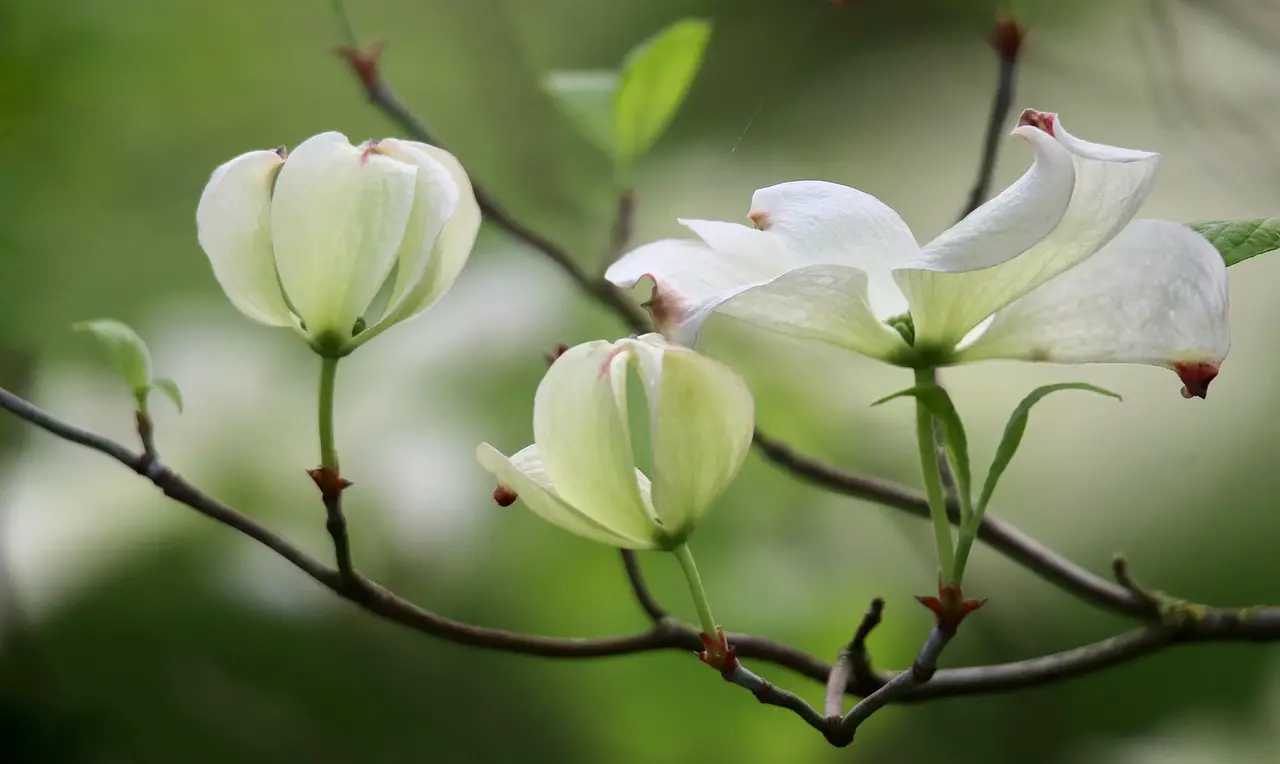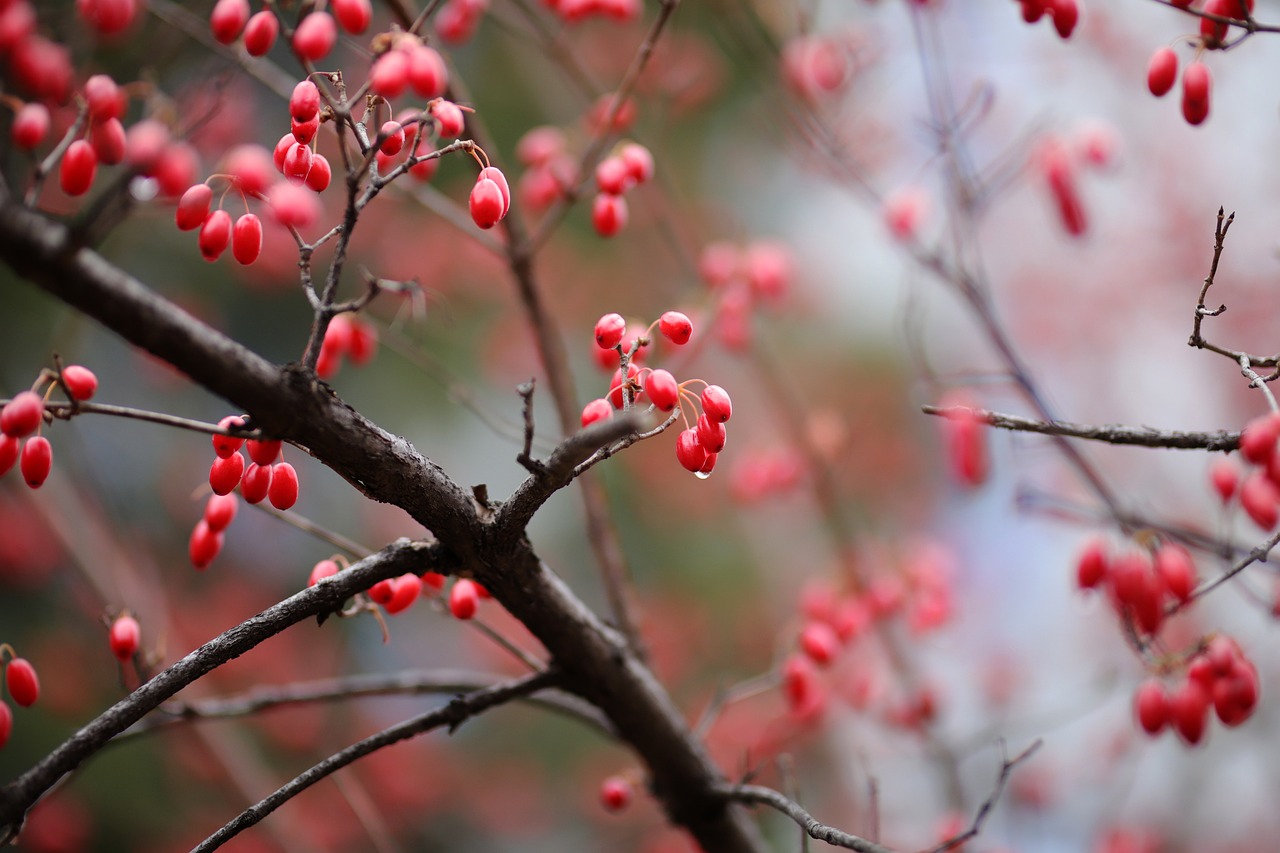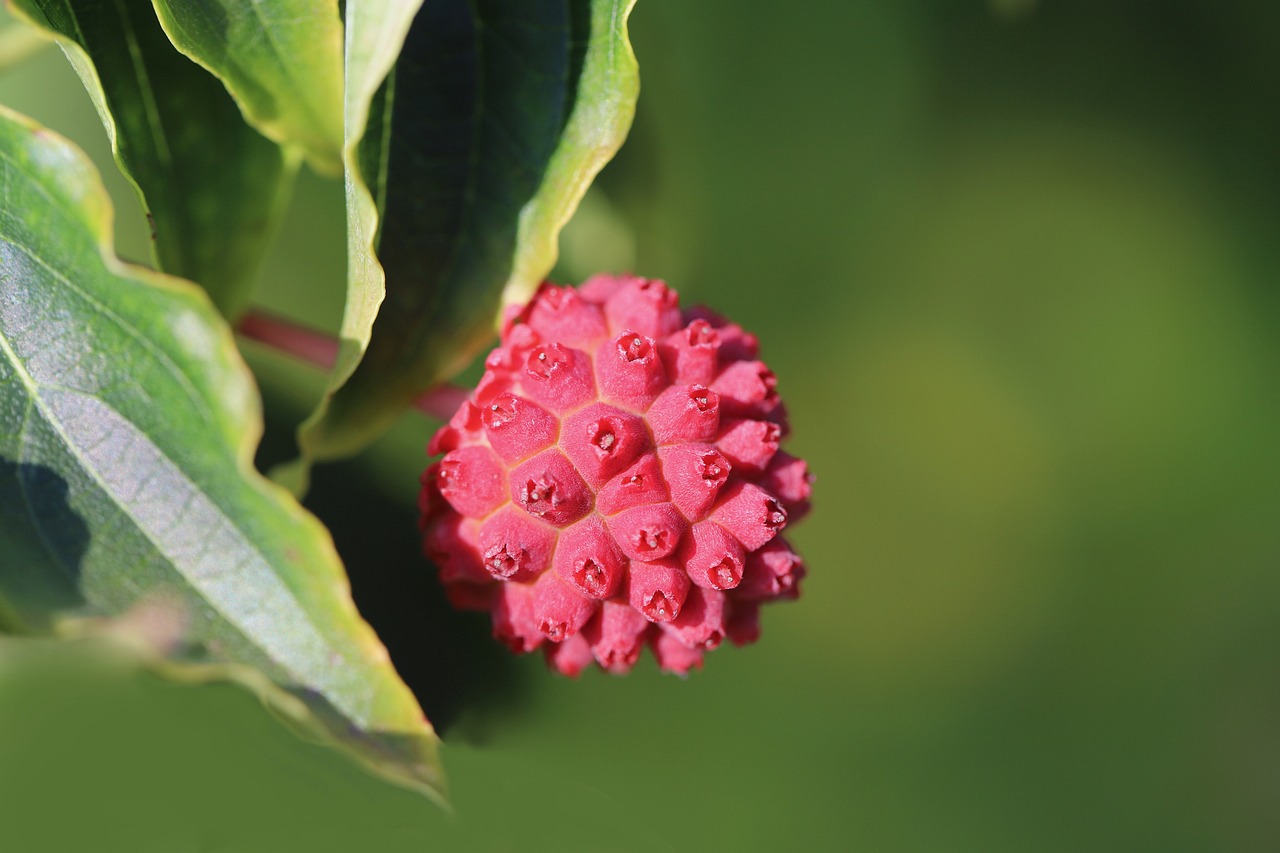Dogwood trees typically grow at a moderate rate of 1 to 2 feet per year. Their fall foliage displays vibrant colors, ranging from yellow to deep red, significantly enhancing the landscape during autumn.
Dogwood trees, belonging to the genus Cornus, are popular for their stunning blooms and vibrant fall colors. Native to North America, they are renowned for their ornamental value and adaptability. These trees are often found in gardens, parks, and natural woodlands. With their distinctive floral displays in spring and rich foliage in fall, dogwoods are cherished additions to any landscape.

Understanding the growth rate of dogwood trees is essential for gardeners and landscapers. This knowledge helps in planning the layout of gardens and ensuring that these trees have enough space to flourish. Additionally, the vibrant colors of their fall foliage can enhance the aesthetic appeal of properties when paired with other plants. To appreciate their impact fully, it is important to explore the factors influencing their growth and the vibrancy of their leaves in autumn.
Growth Rate of Dogwood Trees
The growth rate of dogwood trees can vary depending on several factors. These include the specific species of dogwood, soil conditions, water availability, and climate. Generally, dogwood trees exhibit a slow to moderate growth rate. Here are some key points to consider:
- Species Variation: Different species of dogwood have varying growth rates. For instance, the flowering dogwood (Cornus florida) typically grows slower than the Pacific dogwood (Cornus nuttallii).
- Optimal Conditions: Dogwoods thrive in well-drained, moist soil with plenty of organic matter. They prefer partial shade but can tolerate full sun with adequate watering.
- Watering Needs: Regular watering during dry spells promotes healthy growth. However, overwatering can lead to root rot, hindering growth.
A well-cared-for dogwood can reach heights between 15 to 30 feet, depending on the species and environment. The flowering dogwood, for example, generally reaches a height of about 20 to 30 feet at maturity.

Fall Foliage of Dogwood Trees
One of the most captivating features of dogwood trees is their fall foliage. As summer transitions into autumn, dogwoods showcase a spectacular transformation. The leaves change color from green to shades of yellow, orange, and red. This change not only beautifies the landscape but also attracts attention from nature enthusiasts and photographers alike.
The intensity and duration of fall color can be influenced by several environmental factors:
- Temperature: Cooler temperatures at night can enhance the production of anthocyanins, pigments responsible for red hues in leaves. A warm day followed by a cool night is ideal for vibrant fall colors.
- Soil Moisture: Adequate moisture during the growing season contributes to healthier leaves. Insufficient water can lead to premature leaf drop or dull colors.
- Sunlight: Exposure to sunlight can affect leaf color. Leaves receiving more sunlight often display brighter colors compared to those in shaded areas.
The beauty of dogwood trees in the fall often leads to their use in landscaping designs aimed at achieving year-round visual interest. Homeowners frequently plant dogwoods near patios or walkways to maximize their seasonal impact.

Importance of Dogwoods in Landscaping
Dogwoods play an essential role in landscaping due to their aesthetic appeal and ecological benefits. They provide habitat for various wildlife species, including birds and insects. The flowers attract pollinators like bees and butterflies in spring, while the fruits offer food for birds in late summer and fall.
Their moderate size makes them suitable for smaller yards or as accent trees in larger landscapes. Planting dogwoods can enhance property values and improve overall neighborhood beauty. Given their adaptability and stunning seasonal changes, dogwoods are a favorite choice among gardeners.
| Dogwood Species | Growth Rate (ft/year) | Mature Height (ft) |
|---|---|---|
| Flowering Dogwood (Cornus florida) | 1-2 | 20-30 |
| Pawpaw Dogwood (Cornus alternifolia) | 1-2 | 15-25 |
| Pacific Dogwood (Cornus nuttallii) | 2-3 | 30-50 |
In conclusion, the growth rate and fall foliage impact of dogwood trees are significant aspects of their charm and utility. Understanding these elements allows gardeners and landscapers to maximize their beauty and ecological contribution in various settings.
Factors Affecting Dogwood Tree Growth Rate
The growth rate of dogwood trees is influenced by various environmental and biological factors. Understanding these factors can help individuals cultivate healthy and vibrant trees. Here are some of the most significant aspects to consider:

- Soil Quality: Dogwoods prefer well-drained, loamy soil rich in organic matter. Poor soil quality can stunt growth, leading to smaller trees and reduced flowering.
- Sunlight Exposure: While dogwoods can tolerate some shade, they generally thrive in partial sunlight. Full sun conditions can enhance their growth, but too much direct sun can stress the tree.
- Water Availability: Adequate watering is crucial during the growing season. Dogwoods need consistent moisture, especially in hot weather. However, overwatering can be detrimental.
- Temperature and Climate: Dogwoods are sensitive to extreme temperatures. They flourish in temperate climates but may struggle in areas with harsh winters or excessively hot summers.
- Pest and Disease Management: Keeping an eye on pests and diseases is vital. Infestations can hinder growth and damage the tree.
Common Dogwood Pests and Diseases
Like many other trees, dogwoods are susceptible to a variety of pests and diseases that can impact their health and growth rate. Awareness and management of these issues are key to maintaining robust dogwood trees.
Pests
- Dogwood Borer: This insect bores into the trunk, causing damage that can lead to decline or death if not managed.
- Aphids: These small insects feed on the sap of dogwood leaves. Heavy infestations can cause leaf curling and yellowing.
- Scale Insects: Scale insects attach themselves to branches and leaves, sucking sap and weakening the tree.
Diseases
- Powdery Mildew: This fungal disease appears as a white powdery coating on leaves, impacting their ability to photosynthesize.
- Dogwood Anthracnose: Caused by a fungal pathogen, this disease leads to leaf spots, wilting, and branch dieback. It thrives in wet conditions.
- Canker Diseases: Various fungi can cause cankers on dogwood trees, leading to bark lesions and tree decline.
Caring for Dogwood Trees
Caring for dogwood trees involves several key practices that promote healthy growth and vibrant foliage. Here are some essential care tips:
- Planting Location: Choose a location with partial shade and well-drained soil to ensure optimal growth conditions.
- Irrigation: Water the tree regularly, especially during dry spells. A good rule of thumb is to provide about an inch of water weekly.
- Fertilization: Apply a balanced fertilizer in early spring to support new growth. Follow the manufacturer’s recommendations for application rates.
- Pruning: Prune dogwood trees in late winter or early spring to remove dead or damaged branches and improve airflow.
- Pest Control: Monitor for pests regularly. Use organic pesticides or natural remedies to manage infestations effectively.
The Aesthetic Appeal of Dogwood Trees
Beyond their growth characteristics, dogwood trees are celebrated for their beauty throughout the seasons. Their aesthetic appeal makes them a popular choice in landscaping and garden design.
In spring, dogwoods burst into bloom with stunning flowers that can be white, pink, or red, depending on the species. The flowers attract various pollinators, enhancing the biodiversity of gardens.
During summer, their lush green foliage provides shade and coolness, making them ideal for patios or shaded areas in yards. As fall approaches, their leaves transform into a brilliant display of colors, ranging from bright yellows to deep reds, creating a striking contrast against other autumn hues.
In winter, the unique branching structure of dogwoods adds interest to the landscape even without leaves. Their bark often takes on subtle hues that stand out against a snowy backdrop.
| Season | Aesthetic Features | Wildlife Benefits |
|---|---|---|
| Spring | Blooming flowers in various colors | Attracts bees and butterflies |
| Summer | Lush green foliage | Provides shade for birds and other wildlife |
| Fall | Vibrant leaf colors | Fruits attract birds |
| Winter | Unique branching structure and bark colors | Shelter for small animals |
The combination of these features makes dogwood trees not only functional but also a beautiful addition to any landscape. Their seasonal changes provide ongoing interest throughout the year, ensuring that they remain a favorite among gardeners and homeowners alike.
Popular Dogwood Species and Their Unique Characteristics
There are several species of dogwood trees, each with its unique traits and adaptations. Understanding these species can help gardeners select the right variety for their landscape. Below are some of the most popular dogwood species and their distinguishing features:
Flowering Dogwood (Cornus florida)
The flowering dogwood is perhaps the most recognized species due to its stunning spring blooms. This small to medium-sized tree typically grows between 20 to 30 feet tall and features white or pink flowers that attract various pollinators.
- Growth Rate: 1-2 feet per year
- Fall Color: Leaves turn vibrant shades of red and purple in autumn.
- Environment: Prefers well-drained soil and partial shade.
Pawpaw Dogwood (Cornus alternifolia)
The pawpaw dogwood is a lesser-known variety that offers unique horizontal branching and tiered growth. It typically reaches heights between 15 and 25 feet.
- Growth Rate: 1-2 feet per year
- Fall Color: Displays shades of yellow in fall.
- Environment: Thrives in moist, well-drained soils and can tolerate more shade than other species.
Pacific Dogwood (Cornus nuttallii)
The Pacific dogwood is native to the western United States and is known for its large, showy flowers. This tree can grow significantly taller, reaching heights of 30 to 50 feet.
- Growth Rate: 2-3 feet per year
- Fall Color: Leaves turn golden-yellow to reddish-purple in autumn.
- Environment: Prefers cooler climates and well-drained soils.
Cultural Significance of Dogwood Trees
Dogwoods hold cultural significance in various regions, often symbolizing beauty, resilience, and renewal. These trees are frequently featured in literature, art, and folklore. Here are some notable aspects of their cultural importance:
- Symbolism: In many cultures, dogwoods symbolize love and fidelity due to their beautiful flowering displays.
- Historical Use: The wood of dogwood trees is dense and strong, making it valuable for crafting tools and furniture.
- Religious Significance: In Christianity, the dogwood tree is often associated with the crucifixion of Christ, representing hope and resurrection.
Dogwood Trees in Urban Environments
Dogwoods are increasingly popular in urban landscapes due to their moderate size and aesthetic appeal. They can be used effectively in parks, residential areas, and streetscapes. Here are some considerations when planting dogwoods in urban settings:
- Space Requirements: Ensure there is enough space for roots to grow without interfering with sidewalks or foundations.
- Pavement Impact: Roots can lift pavement if planted too close. Consider using root barriers to manage this issue.
- Aesthetic Integration: Dogwoods can enhance urban aesthetics by providing seasonal color contrasts amidst concrete structures.
- Sustainability Practices: Incorporate sustainable practices such as mulching and integrated pest management to promote healthy tree growth in urban environments.
Integrating dogwoods into urban landscapes can improve air quality, provide shade, and create habitats for wildlife. Their presence contributes to the overall beauty and ecological health of cities.
The Role of Dogwood Trees in Ecosystems
Dogwood trees play an important role in supporting local ecosystems. Their flowers, fruits, and foliage contribute to biodiversity. Here are some key benefits they provide within ecosystems:
- Nectar Source: The flowers attract bees, butterflies, and other pollinators, supporting their populations.
- Fruit Production: Dogwoods produce berries that serve as a food source for birds and small mammals during late summer and fall.
- Habitat Creation: The structure of dogwood trees offers shelter for various wildlife species, including nesting sites for birds.
Their ability to support diverse species makes dogwoods invaluable in maintaining ecological balance within their habitats. By planting dogwood trees, individuals can contribute to local conservation efforts while enhancing their landscapes.
| Species | Main Benefits in Ecosystems | Pests or Diseases Associated |
|---|---|---|
| Flowering Dogwood | Nectar for pollinators; berries for birds | Dogwood borer; powdery mildew |
| Pawpaw Dogwood | Shelter for small wildlife; food source | Aphids; scale insects |
| Pacific Dogwood | Biodiversity support; habitat creation | Dogwood anthracnose; canker diseases |
The multifaceted role of dogwood trees in ecosystems highlights their significance beyond mere ornamental value. Their contributions to biodiversity and ecosystem health make them a worthy addition to any landscape or natural area.
Maintaining Healthy Dogwood Trees
To ensure that dogwood trees thrive and maintain their beauty throughout the seasons, proper care and maintenance are essential. Here are some practical tips for maintaining healthy dogwood trees:
- Regular Watering: Consistent moisture is crucial, particularly during dry spells. Water deeply to encourage deep root growth. Mulching around the base can help retain soil moisture.
- Monitoring for Pests and Diseases: Regularly inspect leaves and branches for signs of pests or diseases. Early detection is key to effective management.
- Appropriate Pruning: Prune dogwood trees in late winter or early spring to remove dead or diseased branches. This enhances airflow and reduces the risk of fungal infections.
- Soil Testing: Conduct soil tests periodically to ensure nutrient levels are adequate. Amend the soil as needed based on test results.
- Seasonal Fertilization: Apply a balanced fertilizer in spring to support healthy growth. Avoid over-fertilizing, which can lead to lush foliage but fewer blooms.
By following these maintenance practices, gardeners can enhance the longevity and vitality of their dogwood trees, ensuring they flourish for years to come.
Dogwood Trees in Landscape Design
Incorporating dogwood trees into landscape design can create stunning visual effects, especially when considering their seasonal changes. Here are some design ideas:
- Focal Points: Use dogwoods as focal points in gardens. Their beautiful flowers in spring and vibrant foliage in fall can draw attention and add interest.
- Mixed Plantings: Combine dogwoods with other flowering plants and shrubs to create diverse habitats. This not only enhances aesthetics but also supports wildlife.
- Shade Trees: Plant dogwoods strategically to provide shade for outdoor spaces like patios or seating areas.
- Pathway Borders: Use smaller dogwood species as border plants along pathways or driveways, providing a natural transition from hard surfaces to green spaces.
By thoughtfully integrating dogwoods into landscape designs, homeowners can create visually appealing gardens that enhance their outdoor living spaces.
Final Thoughts
Dogwood trees are a remarkable addition to any garden or landscape. With their moderate growth rate, stunning spring flowers, and beautiful fall foliage, they offer both aesthetic appeal and ecological benefits. Understanding the specific needs of different dogwood species is essential for successful cultivation. By paying attention to factors such as soil quality, water availability, and pest management, gardeners can ensure healthy growth and vibrant displays throughout the seasons.
Their role in supporting local ecosystems adds another layer of value to these trees. Dogwoods provide habitat and food sources for various wildlife species, contributing to biodiversity. As urban areas continue to expand, incorporating dogwood trees into landscaping designs can improve the overall health of our environments while enhancing beauty.
In summary, dogwood trees are not just ornamental plants; they are vital components of both natural and cultivated landscapes. Their ability to adapt to different environments makes them a favorite among gardeners and landscapers alike. Whether planting a single tree or creating an entire dogwood grove, the joy these trees bring through their seasonal changes is undeniable. By investing time and care into these beautiful trees, one can create a lasting legacy of beauty and ecological support that future generations can enjoy.
